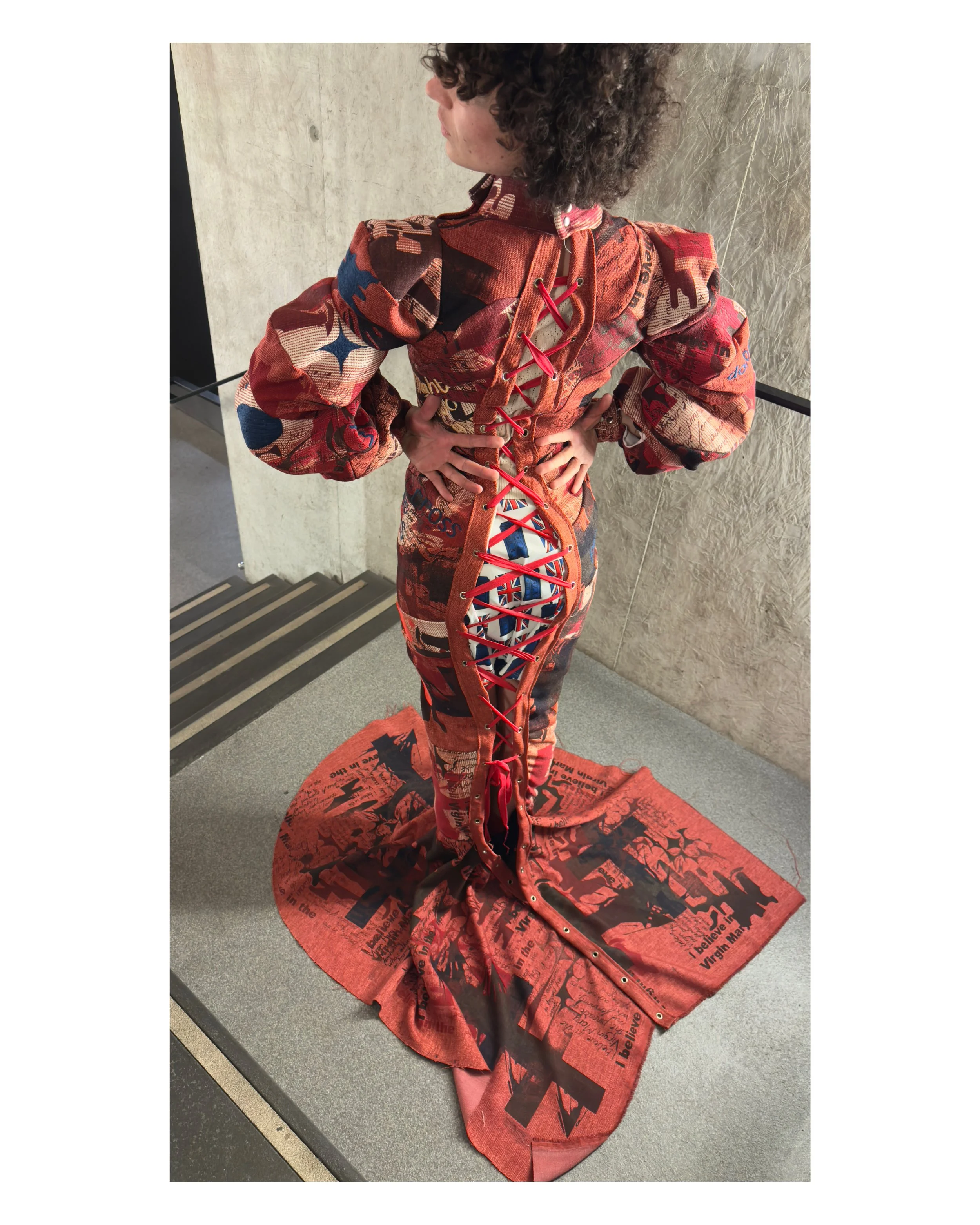Commercial Scrap to Haute Couture
As any upholsterer, dressmaker or tailor will know, no matter how precise your measurements, every project produces waste. For all sorts of reasons it’s good practice to only order the amount of fabric required, but inevitably those end-of-rolls, remnants and off-cuts, over time, will clutter up the workshop until you’re bursting at the seams!
So as is customary for the season, we had a clear-out!
We posted on the ‘gram that we were giving away scrap fabric for free, and after a slow uptake, we approached Manchester Metropolitan University to see if students would make use of the material for art/textiles projects… Dubious that these heavy, uninspiring commercial fabrics would appeal, we were delighted to learn that our donations were devoured within a matter of hours by hungry students!
Check this out!
Image Credit to: Francis Clyde Macias
Francis Clyde Macias, first year student on the B.A. Fashion course, resurrected our bulky, stiff scrap into this stunning embroidered garment for his final piece, here modelled beautifully by @loubellefaix
It’s a striking statement honouring the mother Mary, posing questions about how she’s presented in religious literature and how she’s remembered. Timely food for thought as we approach the Easter weekend…
You can learn more about this piece and check out Francis’ other creations @cme.manifesto_
Image Credit to: Francis Clyde Macias
This is just one example showcasing the possibilities of recycling ‘waste’ material and what can be achieved when businesses support the local community, with a dose of creative vision!
Sharing Francis’ beautiful work, prompted us to think about the increasingly heated conversation around sustainability and the role our industry plays in it.
The use of foam is one of the major culprits in our industry - under the current (1988) fire safety regulations, furniture and building materials have to be treated with chemical flame retardants which are highly toxic. This is thankfully under review - a topic in itself too hot to handle for one blog post.
New alternatives to foam are available, like Ultraflex, which is made from 80% recycled polyester. While it is considered eco-friendly, it is viewed as pricier and less flexible than regular foam. Its long-term durability and support are still uncertain, leading to mixed opinions among upholsterers.
(For more details check out suppliers such as Livedale and Martins for further details.)
These sticky issues aside, there are steps even small businesses like us can take to being more sustainable, which accumulatively will have a big impact:
First and foremost, our reupholstery service supports the circular economy - expanding the lifespan of furniture keeps it out of landfill for longer.
In the main we work with modern furniture which requires minimal foam replacement. Where new foam is necessary, we return our off-cuts to the supplier, where it gets chopped up and churned out as reconstituted foam which can be reused.
For our commercial projects, which involve building bespoke furniture from plans, we ensure the wood used for frames is FSC sustainable and precision cutting using CNC technology minimises wastage working with local businesses onsite such as M3 Industries.
Many of the fabric suppliers we use are becoming more environmentally conscious and increasingly offer fabrics made from recycled materials like plastic bottles!
Some fabric companies, whilst UK based, will manufacture the fabric abroad, which of course adds to the carbon footprint, so we try to use local suppliers where we can.
Such examples are from the likes of Panaz with Eco-Twill fabrics, Sunbury Design with their REPRIEVE range and Linwood with Eco and Low water use velvets.
Easy to see with lots of rules and legislation, an ever-changing market, plus endless personal preferences, there isn’t a simple fix or a sustainable “sweet-spot”.
With no one-solution we try to help our customers and clients explore the many options in order to make a balanced decision. A multi-layered approach generally works best for domestic or commercial projects.
If you have any questions for a re-upholstery project, commercial build or a bespoke design you’d like to talk over, just get in touch to discuss the various routes and how we can help you. Just email info@loosebutton.co.uk or see our contact page here.
Have a look at some of our previous projects on our examples page or follow us on Instagram: loose_button
Here at LooseButton, we’re proud to be a Manchester born and bred business - based at Islington Mill, part of a diverse hive of local businesses and creatives. We believe that a connected community is imperative for generating a more sustainable future.
Because together, we can make a difference - even if it’s just one stitch at a time!


